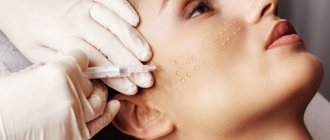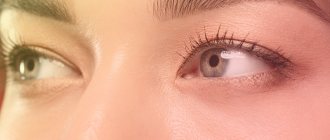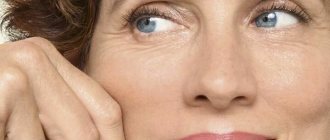A carbon dioxide laser is an optical quantum generator based on carbon dioxide. The “calling card” of this type is the radiation wavelength of 9.4-10.6 microns, which lies in the 4th harmonic of the infrared spectrum (long-wave), as well as the possibility of generation in continuous and pulsed modes.
This type of radiation is characterized by a high thermal effect and, in comparison with other lasers, is considered the most powerful, reaching about 80 kW in continuous mode. It is worth noting another advantage of carbon dioxide models, namely high efficiency, which ranks third among analogues and amounts to a differential efficiency of 15-20%.
The disadvantage of the carbon dioxide laser is its relatively high cost. This is justified by the use of expensive materials and technological features in production. Gas carbon dioxide models are also significantly inferior in terms of resource to solid-state ones, but at the same time they occupy the forefront of demand, since their use has no analogues in most areas of industry and medicine.
What is a CO2 laser (carbon dioxide laser) and its principle of operation
CO2 lasers are lasers that operate on gas mixtures. Light amplification in such lasers occurs due to vibrating transitions in CO2 molecules. This type of laser uses a combination of several gases: carbon dioxide (CO2), helium (He), nitrogen (N2), hydrogen (H2) and xenon (Xe). CO2 lasers generate waves with a length of 10.6 micrometers, which are capable of producing radiation of high quality and high power.
When the carbon dioxide laser radiation hits the skin, it is absorbed by melanocytes (cells that produce the melanin pigment) and water, causing a thermal effect on the tissue.
The action of a laser depends on the density and intensity of light radiation (light beam), duration of exposure, its nature and impulse. How does a laser work? For example, when removing a tumor on the skin, CO2 laser radiation with a power of 50 kW and a density of 1 cm2 is used. The correlation between density and radiation power promotes rapid heating of water contained in tissues and cells, and then heating of anhydrous tissue components.
As a result, instantaneous explosive vaporization of the liquid occurs with the destruction of cells and tissues. In other words, the light radiation of a CO2 laser is absorbed by water, which is contained in large quantities in human cells and tissues.
Differences between fiber and CO2 lasers
The main fiber laser is an optically active fiber, the CO2 laser is a mixture of gases, the key among which is carbon dioxide. The main difference between the two lasers is the wavelength - for a gas laser the indicator is 10.6 kmk, while for a fiber laser it is only 1.06 kmk, which makes it possible to achieve high precision during processing and keep the surface around the treated area intact and not heated. The shorter wavelength of the fiber laser also allows for increased processing speed on metals and stone, as well as a perfectly smooth material surface.
The main disadvantage of the fiber laser is the difficulty in processing non-metals, which is easily achieved using a CO2 laser.
The main differences between fiber and gas lasers can be outlined as follows:
- The fiber laser is suitable for processing materials such as silver, copper, brass, where a gas laser is absolutely powerless. A CO2 laser, on the contrary, works better when working with paper, glass, plywood, synthetic or natural fabric, and wood.
- Using a fiber laser is simpler and does not require much preparation. It's all about a clear principle of operation, which is not based on a complex optical system of mirrors. Due to this, the design of the fiber laser is more compact and can be installed in any machine with a small body or welding machine.
- The efficiency of a fiber laser is about 70%, while for a gas laser this figure is almost two times lower.
Fiber laser is a new generation of equipment that is used in almost all areas that require complex processing of metals, stone or glass (in some cases, plastic). The ease of installation and lightness of the design itself allow it to be used in small industrial centers and jewelry workshops (for making jewelry, applying engraving to the surface).
Types of carbon dioxide lasers
There are two main types of CO2 laser:
- continuous;
- pulsed.
Devices based on continuous lasers
are based on laser radiation, which is constant in time. These are the lasers that are used in surgery to excise skin tumors. But this type of laser has one significant drawback. During its exposure, significant heating of nearby tissue occurs. For this reason, it is impossible to accurately predict the depth of laser penetration into tissue.
Devices based on pulsed radiation
The effect is carried out in short bursts, during which each quantum of radiation transfers a certain energy to the tissues. Subsequently, the cells and tissues in the treated area die and evaporate.
It is important that during exposure to these devices, nearby tissues do not heat up, heat transfer does not occur, and they remain undamaged. We can say that this type of laser has a selective effect, which promotes rapid restoration and healing of the treated skin.
Modern laser devices and installations operate in both continuous and pulsed modes.
Where to order a fiber laser
The compactness of a fiber laser allows it to be placed in almost any room and reduce delivery and installation costs. The quality of processing of metals, glass and stone is primarily influenced by the quality of the equipment supplied, so you should purchase it only from a trusted place. You can order a fiber laser machine for cutting and engraving metal from our company - we have been working on the market for several years and we know exactly what high-quality fiber optic equipment should be like.
What advantages of cooperation do we offer:
- Openness, which allows us to satisfy the needs of the client. If necessary, you can always order a demonstration of the equipment and test it in action, evaluate its performance and operability.
- We offer not only fiber lasers, but also the spare parts necessary for their maintenance and repair. For availability, you can check with the manager or view the available options in the catalog.
- Each laser is offered for sale only after passing testing, which is carried out in two stages - upon arrival at the warehouse, and also immediately before shipment. We make video recordings of the technical condition and appearance, you can be sure that you will not receive low quality goods.
- To receive the laser, you can use delivery or order pickup from our warehouse.
If you do not have experience in how to properly set up and run a fiber laser, our specialists will help you resolve all controversial issues. We offer consultation, including when choosing equipment and placing an order.
What can be improved with carbon dioxide lasers?
Carbon dioxide lasers operate in a variety of modes, which allows them to be used for different purposes:
- Perform laser dermabrasion. Its essence is to remove the top layer of the epidermis in order to rejuvenate and improve skin characteristics.
- Improving the structure of scar tissue. The laser allows you to improve the appearance of scar tissue after acne, post-acne scars, and traumatic scars.
- Evaporation of skin tumors and skin defects: nevi, warts, papillomas, age spots, stagnant spots after acne, tattoos, cysts.
- Eliminates fine wrinkles caused by skin dehydration and improves the appearance of deep wrinkles.
Results of our research:
Rejuvenation
Patient I. Malikova
Patient 43 years old, 1 procedure
Patient M. Surkina,
Patient 37 years old, 1 procedure
Post-acne
Patients of O. Komarskaya
Patient 38 years old, before and after 2 procedures
Patient 38 years old, before and after one procedure
This study is described in more detail in the article by Darbanova E.M. and published in the Scientific and Practical Journal “Aesthetic Medicine”, Volume XVI. No. 2, 2021, “Correction of post-acne scars using ablative fractional photothermolysis using a CO2 laser and a gas-liquid skin treatment system.”
Scarring
Patient M. Surkina
Patient M. Surkina, 28 years old, 1 procedure
Striae
Patient I. Vikhrova
Patient I. Vikhrova, 33 years old, 1 procedure
Carrying out the procedure with CO2 laser
The procedure is carried out in several stages:
- The first stage is cleansing the skin. The skin is cleansed of decorative cosmetics with special antiseptic preparations.
- The second stage is anesthesia 30 minutes before the start of the main procedure. Local anesthetics in the form of cream, gel or spray are used as painkillers. If it is necessary to eliminate serious skin defects, general anesthesia is performed.
- The third stage is the direct treatment of the required areas of the skin. This stage is the essence of the procedure and lasts 20-30 minutes.
- The fourth stage is the final one. After carbon dioxide laser treatment, a soothing and moisturizing cream is applied to the skin, which can restore and moisturize the skin's normal moisture level.
About 10 days before the procedure, you must start taking antiviral medications to prevent relapses of herpes.
In the first days after the procedure, it is necessary to apply healing preparations and antibacterial ointments to the skin, which will be prescribed by the doctor.
What does the term “factional” mean?
During a cosmetic procedure, we can remove all altered tissue. This effect is achieved, for example, during peeling, when the acid affects the entire area of the skin. In this case, you need to prepare for a long recovery period, peeling, and crusts. When performing deep peeling, there is a risk of complications: a chemical burn can heal with the formation of scars. The only reason why peelings are still actively used in beauty salons is the insignificant depth of penetration of the composition. With a sufficiently superficial effect, the body’s resources are enough to restore tissue without scars and other problems.
In the case of laser exposure, continuous tissue damage leads to burns and related complications. Fractional laser exposure allows the stimulation of renewal of the epidermis and dermis without serious negative consequences, during which columns of thermal injury are created - microscopic zones of tissue evaporation. Columns of thermal effects are interspersed with unaltered areas of the skin, which creates optimal conditions for healing. At the same time, cytokine “cascades” that originate in the foci of microdamage spread to the entire array of the epidermis and dermis, healing, rejuvenating the skin, improving its appearance.
What effect does carbon dioxide laser have in cosmetology?
The carbon dioxide laser is most often used for skin resurfacing. To carry out this procedure, the laser device is adjusted in such a way that the frequency and power of the laser beam removes in one pulse a superficial area of skin no more than 24-30 micrometers thick.
In this case, the pulse oscillation frequency is no more than 5 hertz, which prevents deep heating of tissues and their uncontrolled damage.
Skin rejuvenation under the influence of CO2 laser radiation is determined by several factors:
- reduction in the depth of wrinkles due to surface evaporation of tissues;
- coagulation of tissues and blood vessels also due to the evaporation of fluid from cells;
- changes in the structure of protein molecules (denaturation);
- drying out of tissues due to dehydration;
- destruction of collagen fibers also due to dehydration;
- tissue reaction to traumatic and thermal damage, which provokes aseptic inflammation;
- aseptic inflammation, provoking the activation of fibroblasts, which synthesize collagen and elastin with the formation of fibrils in a parallel arrangement.
Features of ablative resurfacing using the CO2RE laser
The main difference between CO2RE (Candela) and other similar lasers on the market is the shortest possible pulse. The shorter the impulse, the less tissue overheating, the more effective the procedure and the more comfortable the rehabilitation. Of course, rehabilitation can only be called relatively comfortable - this is not Fraxel re:store DUAL, when you can calmly return to your normal lifestyle in a few days. Clinical rehabilitation, during which swelling and crusting disappear, lasts on average from 7 to 14 days. With deep grinding, slight redness can persist for up to one and a half months. It is easily corrected with tonal means and does not affect the patient’s social life in any way. It is equally important that the procedure with CO2RE is much easier to tolerate than with other ablative lasers.
As for the intervals between procedures, there are no clear recommendations. There is no such rule “you have done one procedure, the next one must be done exactly one month later.” Everything is determined individually, taking into account tissue restoration. For example, on the body it occurs more slowly than on the face - this is due to blood supply. A lot depends on the structure of the skin. If it is thin and atrophic, then the renewal process will take much longer. In this case, replenishment with biorevitalizants is necessary. Otherwise, the skin will recover very poorly. You should always adhere to the golden rule - any negative stimulus associated with skin damage must be combined with a positive one that improves its condition. Is it possible to do the procedure more often than once every six months? Hypothetically it is possible, but not earlier than in 1.5 months. Completely on the face or on some problem area. For example, if you performed the first procedure in November, you can safely repeat it in January.
All CO2 lasers increase photosensitivity, which means you need to be very careful with tanning after the procedure. Especially for those patients who are prone to hyperpigmentation. If such a patient had CO2 resurfacing and after 2 weeks went south, then it is 100% that we will get pigmentation. That is why this procedure is done only in the autumn-winter period. For a month after the procedure there should be no tanning: solarium, trips to countries with active sun (including to a ski resort).
CO2 laser has a fairly wide range of applications.
First of all, we prescribe it for rejuvenation, when it is necessary to remove excess skin. The procedure is suitable for almost all areas. Of course, such delicate areas as the neck and mammary glands require a special approach: lower, universal parameters are used. We select parameters for each patient individually, taking into account his characteristics and goals. It is this scheme of ablative resurfacing that gives the maximum result.
It is necessary to clearly understand that with the help of a CO2 laser we can tighten the skin, significantly reduce the depth of wrinkles, and eliminate dyschromia. However, if there are pronounced age-related changes (severe ptosis, sagging soft tissues, and even more so sagging muscles), no laser can eliminate this - such problems are already solved by plastic surgeons. If we are faced with the task of tightening the skin, then the CO2RE laser has no equal. We get qualitatively different skin: it becomes elastic, there are significantly fewer wrinkles, the skin texture is evened out, the pores are narrowed. The patient will be able to evaluate the first result associated with ablative resurfacing (“evaporation” of the skin) no earlier than a month after the procedure. This initial cosmetic effect is slightly offset by the presence of swelling and redness. We get the effect associated with collagen production after about six months, that is, it is cumulative.
Post-acne – for many patients this is a serious problem not only of an aesthetic, but also a psychological nature. Previously, we could not help them. With the advent of CO2RE, the situation has changed radically. The clinical result from its use is incomparable with any other lasers: not only non-ablative, but also ablative. With CO2 resurfacing, even old post-acne scars can be removed (it is believed that those that are no more than six months old can be corrected better, but this is rare - usually people come to us with old ones). In fact, ablative resurfacing can work with any scars: post-acne, post-burn, post-inflammatory (naturally, not in the phase of active inflammation).
Several lasers can be used to eliminate stretch marks - Fraxel re:store DUAL and CO2RE. On Fraxel we work using deep parameters, but the effect of such a procedure is much lower than on CO2 (after all, this is a non-ablative technique). I want to emphasize that even with the new CO2RE laser, several procedures are necessary to completely get rid of stretch marks. You shouldn’t expect maximum results from one.
Sharp changes in skin tone are associated not only with age-related changes, but also with strong fluctuations in weight. For example, after childbirth. If during pregnancy a woman had a large belly with a fairly small thickness of fiber, there is a high probability that the skin will stretch greatly. CO2 laser resurfacing copes well with changes in skin tone: sagging, moderate stretching. I want to emphasize that no hardware technique can replace plastic surgery. If there is a muscle strain (divergence of the rectus abdominis muscles), severe stretching of the skin (when it “hangs” like a pouch), we cannot do anything - these are direct patients of plastic surgeons.
Another delicate area on the body that is usually difficult to correct is the inner surface of the shoulders. This area suffers greatly, primarily due to age-related changes. To tighten and tighten the skin and rejuvenate, you can also use ablative resurfacing with CO2RE. With relatively little rehabilitation, we achieve good results that we cannot obtain with non-ablative lasers.
CO2 ablative resurfacing is a serious procedure. Of course, it is cosmetological, but it requires certain skills and experience from the doctor. Only the correct purpose of the procedure, the correct choice of parameters and the correct management of the patient after it helps to avoid negative consequences or stop them.
Side effects and complications
After a carbon dioxide laser procedure, side effects occur in the form of mild redness and slight peeling of the skin, which usually disappear after two days. Such effects are achieved by a one-time procedure using a carbon dioxide laser.
If there are more procedures, the skin turns significantly red (the hyperemia lasts for a month), and bloody crusts appear, which under no circumstances should be forcibly removed. Under these crusts, healthy young skin is formed.
A large number of procedures can also provoke the appearance of long-term bleeding ulcers covered with crusts. Healing of ulcers occurs within 2-3 months. With deep penetration of the laser, depigmented areas may form on the patient's skin, which contain damaged melanocytes.
If the laser penetrates even deeper, then scars form in these areas. Areas of healthy tissue become intertwined with scar tissue, giving the skin an unhealthy and unsightly appearance.
Contraindications
Despite the fact that CO2 laser (carbon dioxide) is the most effective laser method for skin rejuvenation, at the same time it is considered the most traumatic.
There are absolute and relative contraindications to its implementation.
Absolute:
- local infectious bacterial or viral skin lesion in the area of laser exposure in active form;
- fungal skin infection at the site of CO2 laser exposure;
- HIV;
- hepatitis B or C;
- co-infections with the above viruses;
- autoimmune diseases of the skin and subcutaneous tissue;
- psychological or mental disorders of the patient;
- lack of mutual understanding between doctor and patient;
- inflated patient expectations.
Relative:
- dark or dark skin;
- negative reaction of the patient to the prospect of temporary appearance of skin redness (psychological discomfort);
- general malaise of the patient;
- predisposition to scar formation on the patient’s skin;
- too thin or thick skin;
- too flabby eyelids.
When fractional laser rejuvenation fails
In principle, CO2 laser is not considered a good way to correct unsightly skin color. The reason is that this is a too aggressive treatment method, after which it takes a long time for the surfaces to heal. Pigment spots tend to recover after healing, this happens in at least 30% of cases. Correcting this may require many months of topical treatment and sometimes additional laser treatments. You can try replacing it with DOT rejuvenation.
This treatment is contraindicated in women who are pregnant or breastfeeding, or who have taken isotretinoin within the past six months. This method is also contraindicated for people who have delayed or abnormal wound healing or patients with cancer. If there is a history of herpes virus infections, the doctor should know about this, because this situation requires additional drug treatment, otherwise there may be serious complications.
How long does the effect last?
Sometimes, in rare cases, with massive treatments, it may be necessary to repeat the procedure or adjust the results. This also happens if the patient did not avoid the sun during recovery and did not provide proper skin care. It is clear that the result of the treatment cannot last a lifetime; in a few years there will be a need to repeat the procedure. Around the eyes this may be required after 1-2 years.
But before you venture into such drastic treatment, you should understand all the risks, the overall costs and the time it will take to achieve the final result. Only by following all the doctor’s instructions for quite a long time can you fully achieve all the benefits of this procedure. You also need to have realistic expectations about the end result, and understand that this is far from a panacea.









